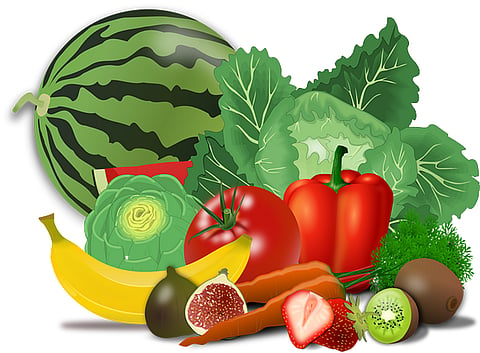
- Home
- न्यूजग्राम
- India
- World
- Politics
- Entertainment
- Culture
- Lifestyle
- Economy
- Sports
- Sp. Coverage
- Misc.
- NewsGram Exclusive
- Jobs / Internships

Vegetable growers in Himachal Pradesh are sowing crops but reaping despair. Last year it was a nationwide lockdown owing to the coronavirus pandemic. This time drought has left them high and dry."Owing to scanty rainfall from January to the end of March, crops have been severely hit in the entire area," Nasib Singh Thakur, a marginal vegetable grower in Kandaghat tehsil in the Solan district, told IANS.
He said almost 60 percent of the crops in the Rabi seasons like peas, cabbage, capsicum, beans, cauliflower, and cucumber are damaged due to long spells of drought from December onwards."In this season during last year, we had left so much food on farms to just rot in the fields owing to the nationwide Covid-19 lockdown (March 25, 2020). This time hostile weather took a heavy toll on the crops," another vegetable grower C.D. Verma of Jubbarhatti village, on the outskirts of the state capital, told IANS.
"On normal occasions, we used to harvest peas in this season of Rs 60,000. This time we earned around Rs 20,000 from them," he added. Vegetable production is generating revenue of Rs 3,500-4,000 crore annually and has emerged as an alternate economic activity in the agriculture sector. The returns of off-season vegetable cultivation are very high compared to traditional food crops.
As per government estimates, cultivating off-season vegetables gives a net return from Rs 60,000 to Rs 200,000 per hectare, whereas the traditional crops fetch Rs 8,000 to Rs 10,000 per hectare only. Officials with the state Agriculture Department said 146,508 hectares of the 413,134 hectares cropped area have been hit due to less rainfall between January and mid of April with an estimated loss of Rs 10,820.57 lakh.
The returns of off-season vegetable cultivation are very high compared to traditional food crops. Pixabay
As per the preliminary survey, the highest loss has been reported in Bilaspur district where 20,280 hectares of the total cropped area of 28,020 hectares was affected resulting in a loss of Rs 3,259.37 lakh. The second worst affected district is Chamba where 3,571 hectares have been hit due to the scanty rainfall. Chief Secretary of Himachal, Anil Khachi said water supply schemes of the Jal Shakti Vibhag, previously known as Irrigation and Public Health Department, had also been hit due to short rainfall.
Out of the total 9,526 schemes in the state, 401 have been hit up to 25 percent, 197 between 25 to 50 percent, 87 between 50 to 75 percent, and 28 schemes more than 75 percent. Amid the second wave of coronavirus pandemic, the farmers are in despair again about their crop due to ongoing travel restrictions almost across the country.
Potato is one of the major cash crops grown in the lower and mid-hills of the state. Una district alone harvests potatoes in nearly 900 hectares, besides cultivating wheat on 29,000 hectares. Its harvesting has just begun in some pockets."The crop this time is less compared to the previous year but the government should have to facilitate the farmer's marketing of potatoes in neighboring states of Punjab, Chandigarh, Haryana, and Delhi, where the curfew-like situation is currently prevailing. Otherwise, most of the potatoes remain unsold," said Harpreet Gill, a grower on the outskirts of Una town.
Last year Una district saw the production of over 13,000 tonnes, a bumper for the second consecutive time. About 81 percent of the total cultivated area in Himachal Pradesh is rain-fed. Manmohan Singh, Director of the regional meteorological department, told IANS the deficiency of precipitation in the state between January and March was more than 60 percent. However, April was more than normal.
However, the last week of April saw damage to crops due to unseasonal snow, hailstorms, and rain. Acting swiftly, the Chief Secretary directed the Horticulture and Agriculture Departments to prepare and submit a detailed analysis report of crop loss assessment and submit it to insurance companies. The saving grace amidst the pandemic is that the state's major harvesting of vegetables is the Kharif season that starts from August-mid and lasts till November-end. (IANS/JC)
